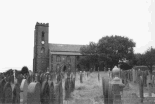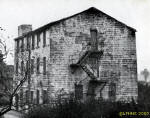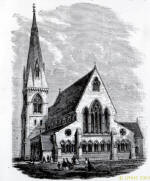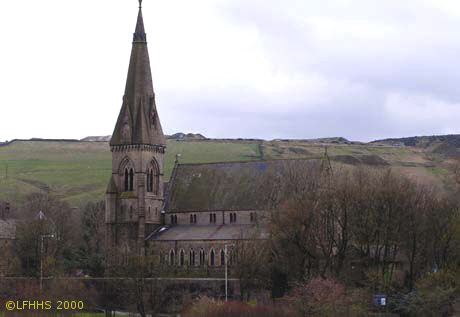
New Line, Bacup
The origins of St. Saviour's At Stubbylee Hall, Bacup, lived Mr. John Holt, J.P., a Christian man with a real concern for the spiritual needs of the people living on his estate around the Lee Mill area. His dreams of building a church were not fulfilled in his own lifetime. When St. John's fell into a state of extreme disrepair and collapse a committee was formed to rebuild it but progress in making the necessary arrangements was so slow that one of the members of the committee, Mr. James Maden Holt (the son of Mr. John Holt) withdrew and determined to go ahead with the building of a church at Stubbylee. After obtaining the consent of the incumbent of St. John's, the Rev. B. Tweedale, and of the Bishop of the diocese to the assignment of a district for the proposed new church, Mr. Holt looked round for a suitable clergyman to tackle the undertaking. He learned that the Rev. William Whitworth, Vicar of St. Jude's, Ancoats, was willing to accept the onerous task of working up the new- parish and invited him to be the first vicar. Mr. Whitworth was duly licensed and began his labours in an old mill at Rockliffe. It was intended that these premises should be only temporary so very few alterations were made. The floor was covered with sawdustand benches mounted on bricks were used as pews. Worship commenced there in 1854.
Work now began on the Sunday School building in New Line and was completed in 1858. The congregation and scholars were called together for a final address by Mr. Whitworth in Rockliffe Mill. A procession then formed and marched to the new school, which was opened by Mr. Whitworth who gave a further address. The upper part of the school was used as a church for the next few years. The vicarage was built next and Mr. Whitworth took up residence there about 1860, shortly before the building of the church commenced.
The church was consecrated on Monday, the 23rd of January, 1865, by the Lord Bishop of Manchester, the Right Rev. J. Fraser, and was designated "St. Saviour's, Bacup". Representatives of the local Wesleyan, Baptist and Independent churches were present at the service.
The cost of the erection of the church, school and vicarage was borne entirely by Mr. James Maden Holt and amounted, as near as can be ascertained, to £8,000, £2,000 and £1,400 respectively, exclusive of the value of the sites.
The new church
The architect employed by Mr. Maden Holt was E. Wyndham Tarn of London. The church, 120 ft. long and 53 ft. wide was built in the Early Pointed Gothic style from stone quarried on Mr. Holt's estate with pillars of polished red granite. Seating accommodation was provided for 1,000 people. The tower, which stands on the north side of the chancel, is surmounted by a spire 150 ft. in height. A small transept was built on the south side of the church. It was used originally as a pew for the Holt family but later the font was transferred to this chapel from its former position in the chancel. The church contains a baptistry for the immersion of adults. It is sunk in the chancel floor and is covered by an ornamental grating.
The above information was obtained from the 1865 - 1965 Centenary Handbook
When the Reverend Eddie Ashworth retired in 1999 the parish became a joint benifice with Holy Trinity Church, Stacksteads. The Church held it's final service in October 2007 and the parish merged with Holy Trinity, Tunstead.
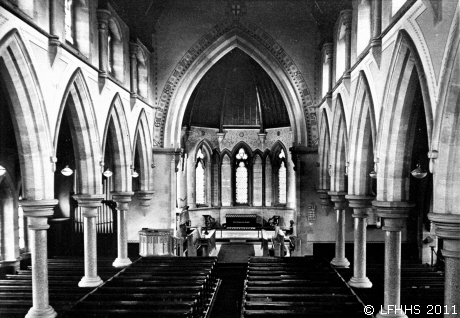
Photograph courtesy of Bacup Natural History Museum

